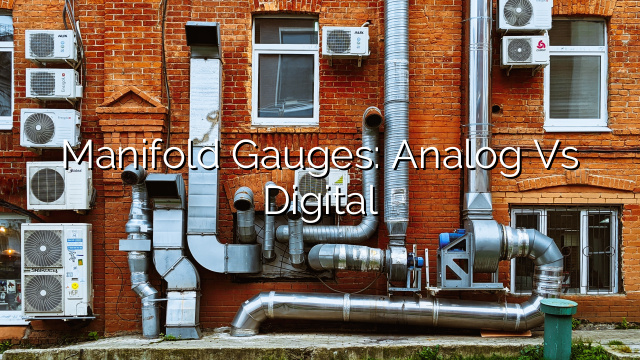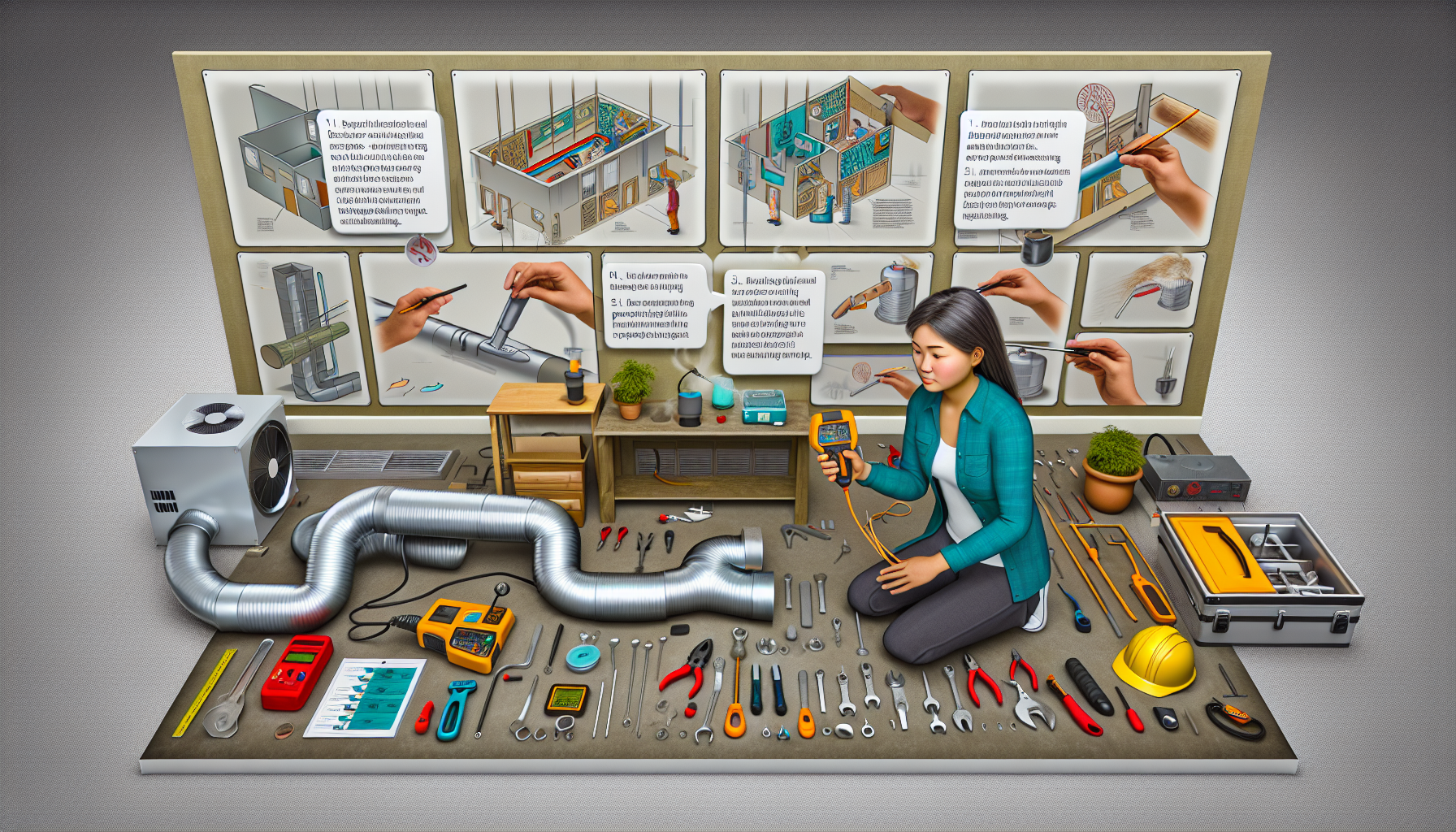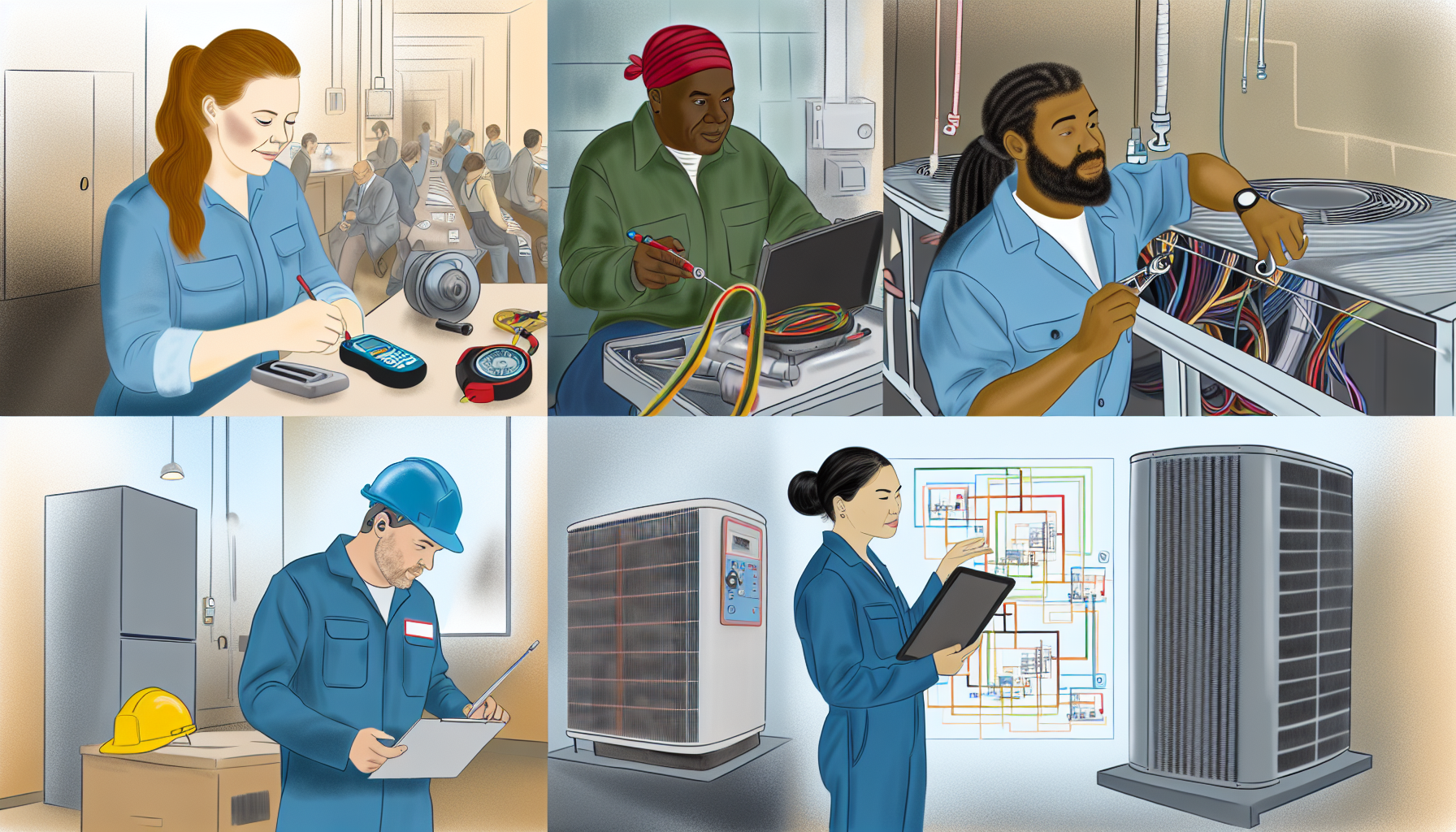Introduction
When it comes to HVAC measurement and testing tools, manifold gauges are an essential component. Manifold gauges are used to measure the pressure and temperature of the refrigerant in an HVAC system. They help HVAC technicians diagnose and troubleshoot issues with the system, and ensure that it is running efficiently. In recent years, there has been a shift from analog manifold gauges to digital ones. In this blog post, we will explore the differences between analog and digital manifold gauges, and the advantages and disadvantages of each.
Analog Manifold Gauges
Analog manifold gauges have been used in the HVAC industry for decades. They consist of a set of gauges, hoses, and connectors. The gauges are large and easy to read, with a range of pressure measurements. Analog gauges use a needle to indicate the pressure of the refrigerant, which is displayed on a scale.
Advantages of analog manifold gauges include:
- Simplicity: Analog gauges are simple to use and require little training. The pressure readings are easy to understand.
- Durability: Analog gauges are built to last. They are designed to withstand the tough conditions of HVAC work, such as temperature extremes and rough handling.
- Cost: Analog gauges are generally less expensive than their digital counterparts.
However, analog manifold gauges also have some drawbacks:
- Accuracy: Analog gauges are not as precise as digital gauges. They are subject to parallax error, which can affect the accuracy of the readings. Parallax error occurs when the angle at which the gauge is viewed affects the position of the needle, leading to inaccurate readings.
- Readability: Analog gauges can be difficult to read in certain lighting conditions or at a distance. The size of the gauges and the position of the needle may make it challenging to accurately read the pressure.
- Type of Measurement: Analog gauges are limited to measuring pressure and temperature. They do not provide additional information or features that digital gauges offer.
Digital Manifold Gauges
Digital manifold gauges are a more recent addition to the HVAC industry. They feature a digital display that shows the pressure and temperature readings in real-time. Digital gauges have a range of advanced features and capabilities, including data logging, wireless connectivity, and compatibility with smartphone apps.
Advantages of digital manifold gauges include:
- Precision: Digital gauges offer precise readings with minimal error. The digital display eliminates the need to interpret a needle’s position, reducing the risk of misreading the pressure.
- Readability: Digital gauges have a clear and easy-to-read display. The readings are presented in large, bold numbers, making it easier to read in any lighting condition or distance.
- Features: Digital gauges provide additional features such as data logging, wireless connectivity, and compatibility with smartphone apps. These features allow technicians to track and analyze system performance, troubleshoot issues, and generate detailed reports.
However, digital manifold gauges also have some drawbacks:
- Complexity: Digital gauges can be more complex to use than analog gauges. They often require more training and familiarity with digital technology.
- Cost: Digital gauges are generally more expensive than analog gauges. The advanced features and capabilities drive up the price.
- Durability: Digital gauges may not be as durable as analog gauges. They are more sensitive to temperature extremes, moisture, and rough handling. However, newer models are being designed to withstand these conditions.
Choosing the Right Manifold Gauge
When choosing between analog and digital manifold gauges, it’s important to consider your specific needs and preferences. If simplicity and cost are the main factors, analog gauges may be the right choice. If precision, advanced features, and data analysis are important, digital gauges are the way to go. It’s also worth considering the training and familiarity of your technicians with digital technology.
FAQs
Q: Are digital manifold gauges more accurate than analog gauges?
A: Yes, digital manifold gauges provide more precise and accurate readings compared to analog gauges. The digital display eliminates the risk of misreading the pressure, which can occur with analog gauges due to parallax error.
Q: Can digital manifold gauges be used with older HVAC systems?
A: Yes, digital manifold gauges can be used with older HVAC systems. However, compatibility may vary depending on the specific model and features of the gauge. It’s important to check the manufacturer’s specifications and recommendations.
Q: Do digital manifold gauges require additional training?
A: Yes, digital manifold gauges can be more complex to use compared to analog gauges. They often require more training and familiarity with digital technology. It’s important to provide proper training and support to technicians to ensure they can effectively use the gauges.
Q: Can analog and digital manifold gauges be used interchangeably?
A: Yes, both analog and digital manifold gauges can be used interchangeably. However, it’s important to note that digital gauges offer additional features and capabilities that analog gauges do not have. Using a digital gauge with advanced features may require additional knowledge and training.
Conclusion
Manifold gauges are critical tools for HVAC technicians, allowing them to measure the pressure and temperature of refrigerant in an HVAC system. Both analog and digital manifold gauges have their advantages and disadvantages. Analog gauges are simple to use and durable, but may lack precision and advanced features. Digital gauges offer precise readings, advanced features, and data analysis capabilities, but can be more complex to use and more expensive. Ultimately, the choice between analog and digital manifold gauges depends on your specific needs, budget, and technician training.








